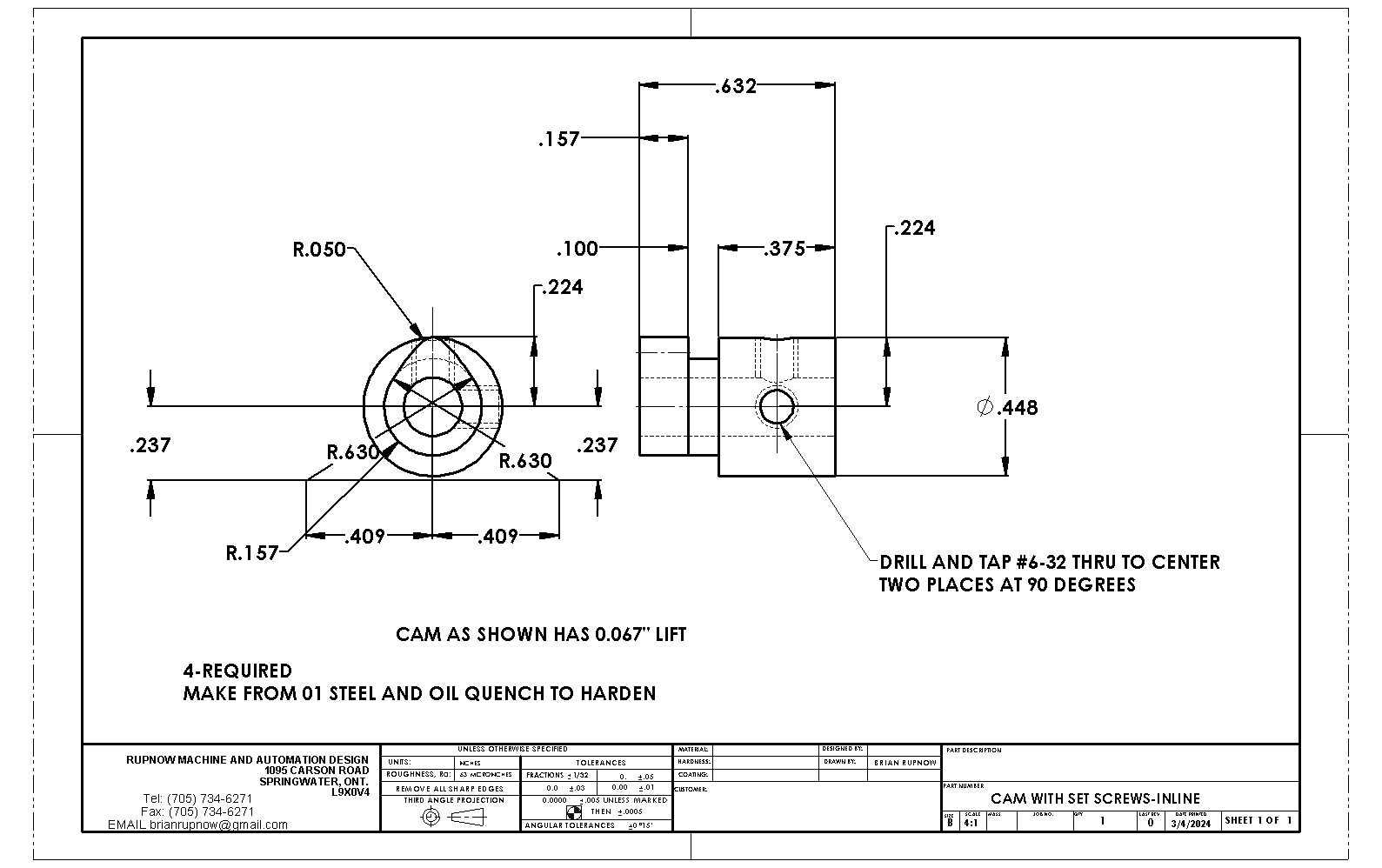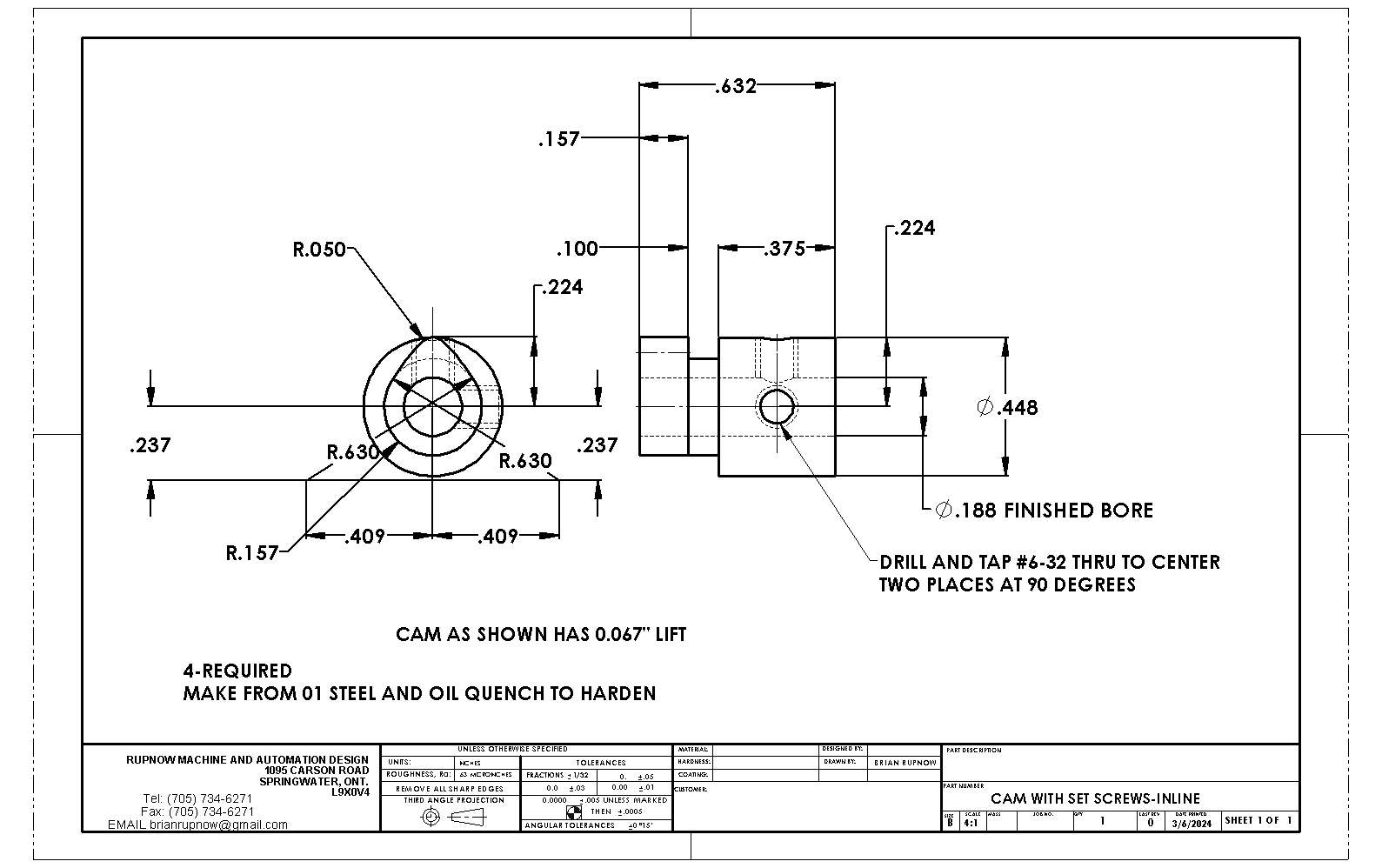This morning I'm setting here thinking about tabletop cnc routers capable of machining metal. I have been searching online, and right now I'm suffering from information overload. What has me thinking about such things?--Mainly machining cams for the engines I build. My cams are small, never more than 1" diameter overall, with bores from 3/16" up to 1/2". I use Solidworks design software, so creating .dxf files is no problem for me. I wouldn't need a large area coverage, heck, 6" square would be more than enough. It would probably have to be a 3 axis machine. My cams are first machined from 01 steel, then heat treated after they are machined. Tell me guys, do you think this is feasible? There is no way that I can justify the expense, but I might even make custom cams for other model hobbyists. I wouldn't be machining entire camshafts, just single cams with a hub and set screws similar to the picture.










